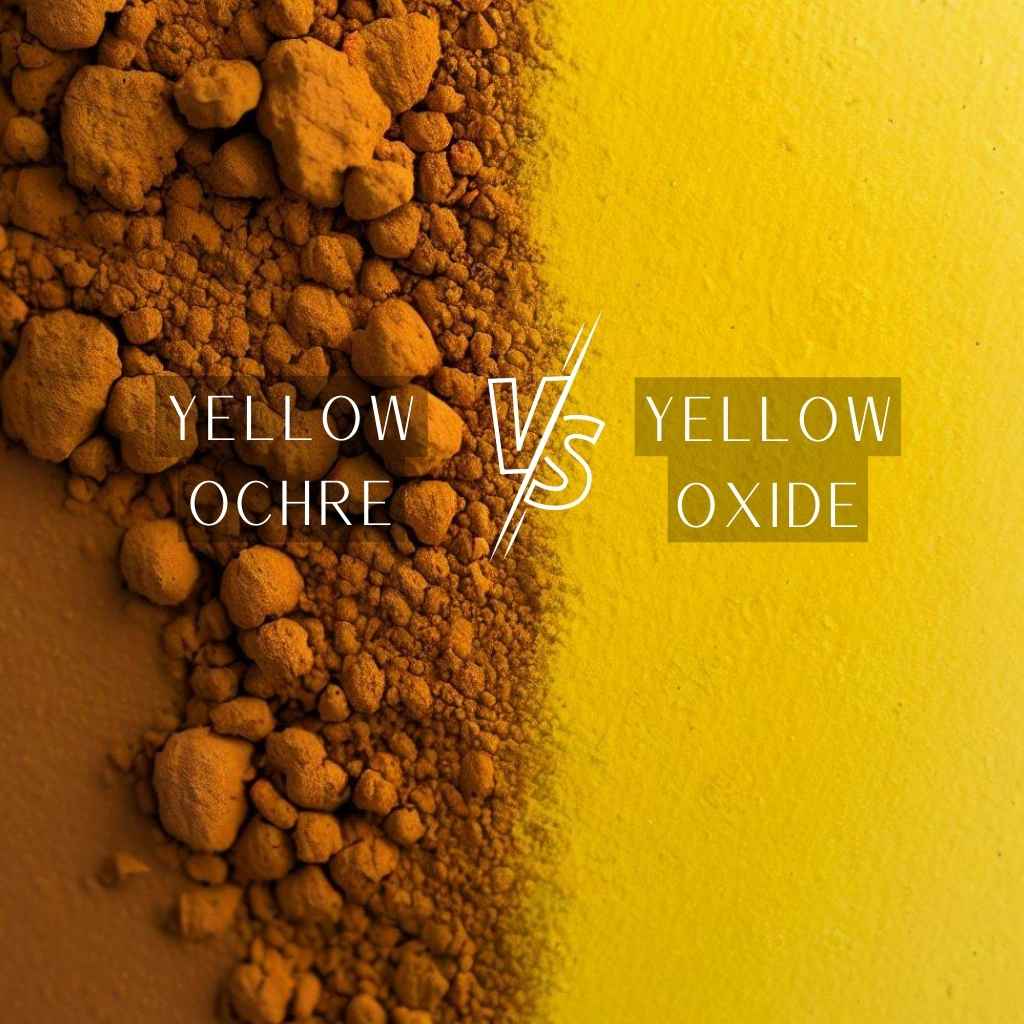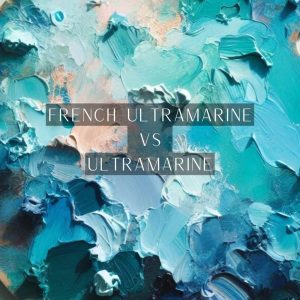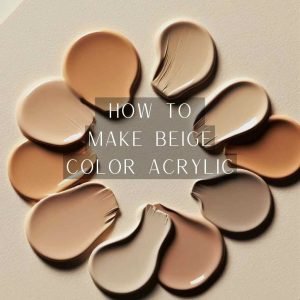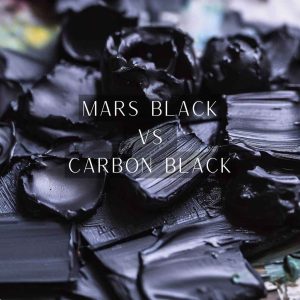Are you an artist, an enthusiast of vibrant colors, or a connoisseur of pigments looking to elevate your creative pursuits to new heights?
If so, brace yourself for a thrilling journey into the enchanting realm of yellow ochre vs yellow oxide – two captivating hues that have taken the world of art and industry by storm.
Join us as we embark on a quest to explore the subtle nuances, the dazzling chemistry, and the awe-inspiring versatility that Yellow Ochre and Yellow Oxide bring to the table.
Yellow Ochre vs Yellow Oxide: A Quick Comparison
Here’s a comparison table that provides a concise comparison between Yellow Ochre and Yellow Oxide for your ease of access –
| Category | Yellow Ochre | Yellow Oxide |
| Color Profile | Warm and Earthy | Bright and Consistent |
| Origin | Natural Earth Pigment | Synthetic Production |
| Transparency | Semi-Transparent | Transparent |
| Lightfastness | Excellent | Excellent |
| Suitable for Mediums | Acrylics, Oils, Watercolors | Acrylics, Oils, Watercolors |
| Mixing Capabilities | Blends well with others | Creates vibrant mixtures |
| Historical Significance | Used since ancient times | Modern pigment innovation |
| Popular Applications | Landscape & Traditional Art | Industrial & Modern Art |
| Cultural Associations | Symbolic & Spiritual | Versatile & Contemporary |
| Versatility | Warmth & Nostalgia | Brightness & Consistency |
What is Yellow Ochre?
Yellow Ochre, a natural earth pigment, boasts a storied past that dates back to prehistoric times. It was one of the first pigments used by early humans to adorn cave walls and create art that would endure through the ages.
Mined from deposits found in various regions worldwide, including France, Italy, and the United States, Yellow Ochre is a testament to the enduring beauty of nature’s creations.
Characteristics of Yellow Ochre-
- Formation of Yellow Ochre: Yellow Ochre’s formation can be attributed to the complex interplay of geological processes and the presence of iron oxide in the soil. Over millions of years, as iron-rich minerals break down, they undergo oxidation, leading to the development of Yellow Ochre pigments.
This natural genesis imbues the pigment with a distinct sense of earthiness that resonates with artists seeking to capture the essence of nature in their work.
- The Color Profile of Yellow Ochre: In terms of color, Yellow Ochre offers a delightful range of warm and earthy tones, ranging from pale yellows reminiscent of sunlit wheat fields to deeper golden hues reminiscent of autumn leaves.
Its ability to evoke feelings of comfort and familiarity has made it a favorite among landscape artists and those aiming to convey a sense of timeless nostalgia.
- The Versatility of Yellow Ochre: Yellow Ochre’s versatility knows no bounds, as it seamlessly adapts to various artistic techniques and styles. From traditional oil paintings to modern acrylic works, this pigment has stood the test of time, enriching artwork with its unique charm.
Moreover, its application extends beyond canvas and paper, finding a place in pottery, textiles, and even cosmetics.
What is Yellow Oxide?
Unlike Yellow Ochre, Yellow Oxide is a synthetic pigment, created through modern manufacturing processes. Developed as an alternative to natural pigments, yellow oxide was introduced to meet the increasing demand for more consistent and stable hues.
This synthetic genesis has allowed artists and industries to enjoy a reliable source of yellow pigment that complements their creative visions.
Characteristics of Yellow Oxide-
- Synthetic Production of Yellow Oxide: The production of Yellow Oxide involves a sophisticated chemical process wherein iron oxide is carefully synthesized under controlled conditions.
By manipulating the manufacturing parameters, pigment makers can fine-tune the hue and achieve a level of consistency that natural pigments may struggle to match.
This controlled approach to production ensures that artists and industries can depend on Yellow Oxide to deliver consistent and reliable results.
- The Color Profile of Yellow Oxide: Yellow Oxide is prized for its consistent color profile, offering a radiant and luminous yellow tone that stays true over time.
This uniformity makes it a preferred choice for artists who seek precision in their work, as well as for industries that require standardized color formulations.
The brightness and clarity of Yellow Oxide allow it to shine in a multitude of applications, from intricate artwork to industrial coatings.
- Applications of Yellow Oxide: Yellow Oxide’s adaptability extends across a wide spectrum of applications. Artists appreciate its brilliance and reliability in creating stunning paintings, illustrations, and mixed media artwork.
Meanwhile, the industrial sector benefits from Yellow Oxide’s versatile nature, using it in everything from automotive paints and architectural coatings to plastics and ceramics.
Yellow Ochre vs Yellow Oxide: Comparison
When exploring the world of yellow pigments, two hues that often take center stage are Yellow Ochre and Yellow Oxide.
Here are the key factors that set them apart and make them beloved choices in the artistic and industrial realms-
Chemical Composition
At the core of this comparison lies the chemical composition of Yellow Ochre and Yellow Oxide. Yellow Ochre primarily consists of hydrated iron oxide, which contributes to its warm and earthy tones.
On the other hand, Yellow Oxide is crafted from synthetic iron oxide, resulting in a brighter and more consistent hue. This distinction in chemical makeup is responsible for the differing aesthetic effects that each pigment imparts.
Color Intensity and Hue
The color intensity and hue of Yellow Ochre and Yellow Oxide showcase notable variations. Yellow Ochre offers subtle and earthy yellows, evoking a sense of timeless nostalgia and connection to nature.
In contrast, Yellow Oxide boasts vibrant and striking hues that demand attention and make a bold statement. Artists seeking a delicate touch may gravitate towards Yellow Ochre, while those aiming for eye-catching brilliance may find Yellow Oxide more appealing.
Transparency and Opacity
The transparency and opacity of a pigment significantly impact an artist’s ability to layer and blend colors. Yellow Ochre generally possesses higher transparency, allowing artists to create intricate glazes and build depth in their artwork.
This quality makes it an excellent choice for achieving luminous and subtle effects.
Conversely, Yellow Oxide tends to exhibit greater opacity, making it ideal for covering larger areas with solid and consistent color, perfect for artists seeking more direct, powerful applications.
Lightfastness and Permanence
An essential consideration for artists creating enduring works of art is the lightfastness of their chosen pigments – the pigment’s resistance to fading when exposed to light.
In this aspect, both Yellow Ochre and Yellow Oxide prove themselves worthy contenders, offering excellent lightfastness to preserve the vibrancy of their colors for generations to come. This attribute ensures that artists can confidently share their creations, knowing they will stand the test of time.
Mixing Capabilities
The ability to mix and blend pigments harmoniously opens a realm of creative possibilities for artists. When mixed with other colors, Yellow Ochre imparts a warm and organic touch to the resulting hues.
On the other hand, Yellow Oxide’s brightness can add a powerful punch to any mixture, allowing artists to achieve a wide range of striking tones.
Suitability for Different Mediums: Acrylics, Oils, Watercolors, and More
Artists working across various mediums must consider how pigments perform in each setting. Yellow Ochre and Yellow Oxide showcase remarkable versatility, adapting well to different painting mediums such as acrylics, oils, watercolors, and even pastels.
Their ability to seamlessly integrate into various artistic practices further solidifies their positions as indispensable pigments in the artists’ toolkit.
FAQs
- Do Yellow Ochre and Yellow Oxide mix well with other earth tones?
Yes, Yellow Ochre and Yellow Oxide harmonize beautifully with other earth tones, such as siennas, umbers, and ochres of various shades. These pigment combinations create a rich and cohesive color palette, ideal for depicting natural landscapes, still-life compositions, and scenes with an earthy ambiance.
- Can Yellow Ochre and Yellow Oxide be used in watercolor washes?
Indeed! Both Yellow Ochre and Yellow Oxide are well-suited for watercolor washes. They blend smoothly with water and other watercolor pigments, creating soft and flowing gradients of color. Watercolor artists can use these pigments to create stunning skies, sunsets, and other atmospheric elements in their paintings.
- Can I use Yellow Ochre and Yellow Oxide to create striking sunlit effects?
Absolutely! These pigments are ideal for capturing the glowing warmth of sunlight in paintings. When blended with other colors, Yellow Ochre and Yellow Oxide can replicate the radiance of sunlight, infusing artwork with an inviting and picturesque ambiance.
- Can Yellow Ochre and Yellow Oxide be used in art therapy practices?
Certainly! Art therapists often use a wide range of pigments, including Yellow Ochre and Yellow Oxide, to engage clients in therapeutic art-making processes. These pigments can evoke emotions, aid in self-expression, and facilitate healing and self-discovery through creative exploration.
- Can Yellow Ochre and Yellow Oxide be used to create dramatic lighting effects in artworks?
Certainly! These pigments are excellent for enhancing dramatic lighting effects in paintings and drawings. By skillfully incorporating them into light and shadow areas, artists can elevate the visual impact of their artwork, creating captivating and dynamic compositions.
Conclusion
As we draw the final brushstroke on our journey through the captivating world of yellow ochre vs yellow oxide, it becomes evident that these two pigments have woven an enthralling tapestry of colors, applications, and unique characteristics.
Throughout this exploration, we have encountered the problem of choosing between these alluring hues, agitating our curiosity, and stirring our creative instincts.
The solution lies in the realization that both Yellow Ochre and Yellow Oxide possess their own enchanting qualities, beckoning artists and industries alike to embrace their brilliance in a harmonious blend.
As we bid adieu to this exploration, we leave you with the empowering choice to celebrate the uniqueness of each pigment and let their luminous yellow glow enrich your creations.





